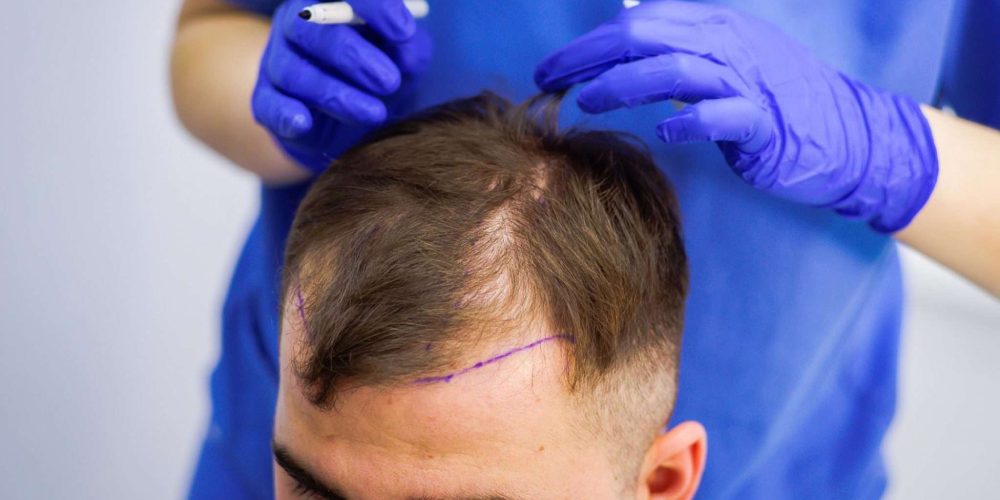Hair Transplantation
Hair loss can have a crucial impact on one's self-esteem and confidence. Luckily, advancements in technology have made hair transplantation a viable and effective solution for individuals dealing with hair thinning or baldness. Zafeerah Skin Clinic is renowned for its high hair transplantation standards. We use the most sophisticated technology for the treatment and have a history of giving the best results to our patients.
What is Hair Transplantation?
Hair transplantation is a surgical technique that involves transplanting hair follicles from one part of the body, usually the sides or back of the scalp (donor area), to areas experiencing hair loss or thinning (recipient area). This procedure helps to restore natural hair growth in areas where hair has become sparse or bald, resulting in a fuller and more aesthetically pleasing appearance.
Role of Hair Transplantation
Hair transplantation plays a crucial role in addressing various types of hair loss, including:
- Male Pattern Baldness: Hair transplantation is a popular treatment for male pattern baldness, which is characterized by hair loss on the crown and frontal areas of the scalp.
- Female Pattern Hair Loss: Women experiencing thinning hair or patterned hair loss can also benefit from hair transplantation to restore hair density and improve overall hair volume.
- Scarring Alopecia: air transplantation can help conceal scars caused by injuries, surgeries, or medical conditions on the scalp, providing a more natural and uniform hairline.
- Eyebrow and Eyelash Restoration: In addition to scalp hair restoration, hair transplantation techniques can be adapted to restore eyebrows and eyelashes for a more defined and symmetrical facial appearance.
How Does Hair Transplantation Work?
The hair transplantation process involves several key steps:
- Consultation: The journey of hair transplant begins with a consultation with a qualified hair transplant surgeon. During this consultation, the surgeon assesses the patient's hair loss pattern, discusses expectations, and develops a personalized treatment plan.
- Donor Hair Harvesting:Hair follicles are harvested from the donor area, typically the back or sides of the scalp, using techniques such as Follicular Unit Transplantation (FUT) or Follicular Unit Extraction (FUE).
- Recipient Site Preparation: The recipient area, where hair will be transplanted, is prepared by creating tiny incisions or recipient sites in a strategic pattern to ensure natural-looking results and proper hair growth direction.
- Hair Transplantation: The harvested hair follicles are carefully implanted into the recipient sites, paying attention to the angle, density, and distribution to achieve a natural appearance.
- Post-Transplant Care:Patients are provided with post-operative care instructions, including guidelines for washing, protecting the transplanted area, and follow-up appointments to monitor progress and address any concerns.
Advantages of Hair Transplantation
Hair transplantation offers several advantages as a hair restoration solution:
- Permanent Results
- Natural Appearance
- Minimal Downtime
- Improved Self-Confidence
FAQs about Hair Transplantation
Local anesthesia is used during the procedure to minimize discomfort, and patients may experience mild soreness or swelling afterward, which typically subsides within a few days.
Hair growth after transplantation is a gradual process, with noticeable improvement typically seen within several months to a year as the transplanted hair follicles start growing.
While rare, potential risks include infection, bleeding, scarring, or temporary shock loss (temporary shedding of existing hair), which are usually manageable with proper post-operative care and follow-up visits.
Hair transplantation can be a perfect solution for most individuals experiencing hair loss or thinning, but candidacy depends on factors such as overall health, hair loss pattern, donor hair availability, and realistic expectations, which are assessed during the consultation.
Conclusion
Hair transplantation is a transformative procedure that can restore natural hair growth, enhance self-confidence, and improve the quality of life for individuals struggling with hair loss. With advancements in techniques and skilled surgeons, hair transplantation offers permanent and natural-looking results, making it a preferred choice for many seeking to regain a fuller head of hair and embrace their natural beauty.


